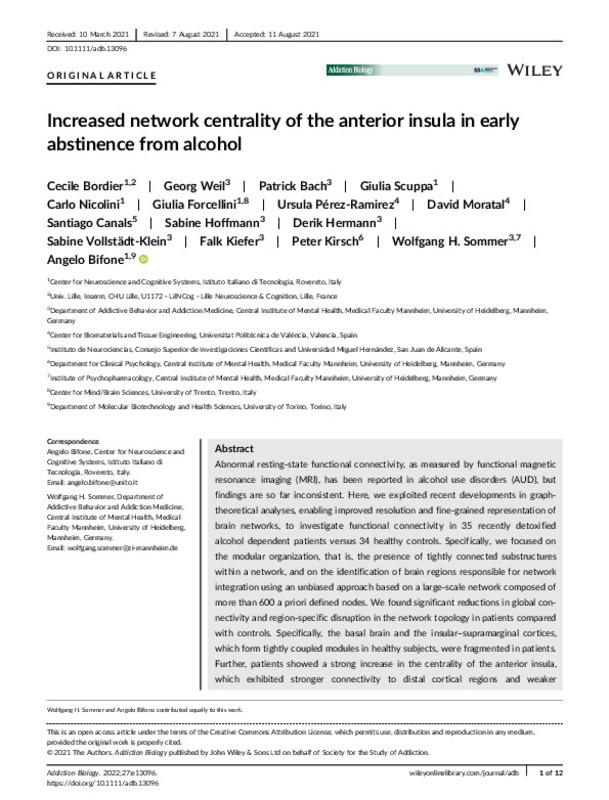JavaScript is disabled for your browser. Some features of this site may not work without it.
Buscar en RiuNet
Listar
Mi cuenta
Estadísticas
Ayuda RiuNet
Admin. UPV
Increased network centrality of the anterior insula in early abstinence from alcohol
Mostrar el registro completo del ítem
Bordier, C.; Weil, G.; Bach, P.; Scuppa, G.; Nicolini, C.; Forcellini, G.; Pérez-Ramírez, MÚ.... (2022). Increased network centrality of the anterior insula in early abstinence from alcohol. Addiction Biology. 27(1):1-12. https://doi.org/10.1111/adb.13096
Por favor, use este identificador para citar o enlazar este ítem: http://hdl.handle.net/10251/193909
Ficheros en el ítem
Metadatos del ítem
| Título: | Increased network centrality of the anterior insula in early abstinence from alcohol | |
| Autor: | Bordier, C Weil, Georg Bach, Patrick Scuppa, G Nicolini , C Forcellini, G Pérez-Ramírez, María Úrsula Canals-Gamoneda, Santiago Hoffmann, Sabine Hermann, Derik Vollstädt-Klein, Sabine Kiefer, Falk Kirsch, Peter Sommer, W | |
| Entidad UPV: |
|
|
| Fecha difusión: |
|
|
| Resumen: |
[EN] Abnormal resting-state functional connectivity, as measured by functional magnetic resonance imaging (MRI), has been reported in alcohol use disorders (AUD), but findings are so far inconsistent. Here, we exploited ...[+]
|
|
| Palabras clave: |
|
|
| Derechos de uso: | Reconocimiento (by) | |
| Fuente: |
|
|
| DOI: |
|
|
| Editorial: |
|
|
| Versión del editor: | https://doi.org/10.1111/adb.13096 | |
| Código del Proyecto: |
...[+] |
|
| Agradecimientos: |
The authors wish to thank Prof. Edward Bullmore and Prof. Nicholas
Crossley for providing the brain parcellation template and Prof.
Markus Heilig for interesting discussions. This work was supported by
the European Union's ...[+]
|
|
| Tipo: |
|









